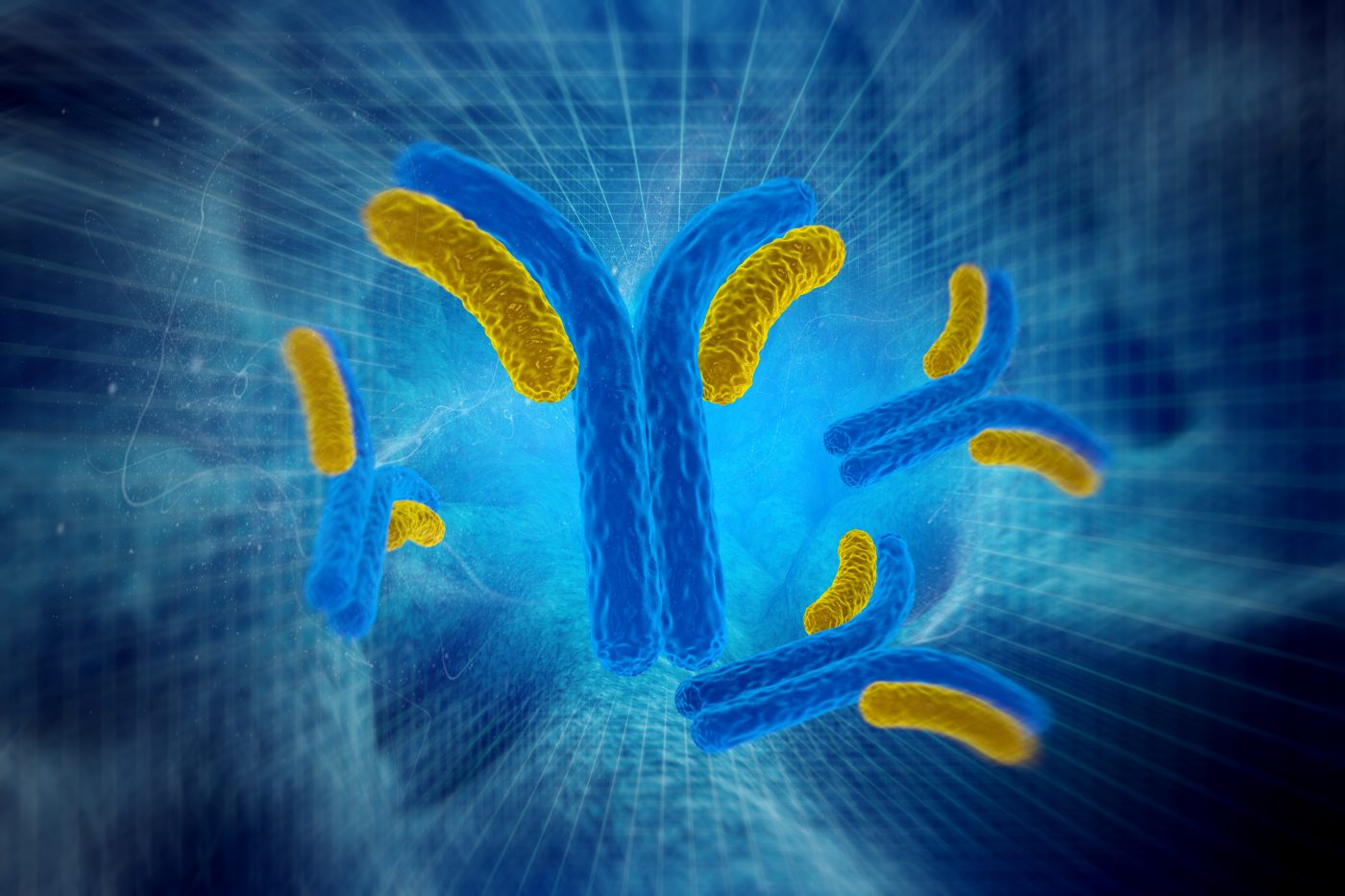52% of SSc Patients Have Autoantibodies Years Before Diagnosis, Study Finds

Increased levels of specific antibodies that can attack the host’s own tissues may be an early manifestation of systemic sclerosis (SSc) that can be detected years before clinical diagnosis. These autoantibodies may also help predict the onset of scleroderma renal crisis (SRC), a potentially life-threatening complication of the disease, a study suggests.
The study, “Autoantibodies are Present Before the Clinical Diagnosis of Systemic Sclerosis,” was published in the journal PLOS ONE.
Approximately 95% of patients diagnosed with SSc have increased levels of autoreactive antibodies, also known as autoantibodies. Some are highly specific to SSc, such as anti-topoisomerase 1 (Topo1), anti-centromere, and anti-RNA polymerase III (RNAP III), while others are also seen in other autoimmune diseases.
However, these autoantibodies are only measured after clinical symptoms have appeared, making it unclear whether they were present before the symptoms’ onset.
To explore this issue, researchers analyzed autoantibody levels in 46 SSc patients’ blood samples that were stored at the U.S. Department of Defense Serum Repository. The repository has over 50 million frozen blood samples from Armed Forces personnel collected upon entering the military, then longitudinally every 1–2 years, as well as before and after deployments.
Among the analyzed samples, 16 were from individuals who had eventually developed SSc with SRC (SSc/SRC group) in a median time of 0.5 years after SSc diagnosis. The other 30 SSc patients in the group analyzed did not develop SRC ( SSc/no SRC group).
SRC occurs in about 5% of patients with SSc, particularly those with the diffuse form of the disease, and constitutes a major complication of SSc characterized by hypertension and acute renal failure.
More than half of the study subjects were black (60.9%) and male (56.5%); the mean age at diagnosis was 43.8 years in the SSc/SRC group, and 34.9 years in the SSc/no SRC group.
Researchers found that autoantibodies were often present years before disease onset. Twelve of the 16 (75%) SSc patients with SRC, and 12 of the 30 (40%) without SRC were found to be positive for at least one type of autoantibody prior to SSc diagnosis — a total of 52%.
In general, patients in the SSc/SRC group were more frequently positive for autoantibodies, and had higher autoantibody levels than patients without SRC.
Both groups showed a similar mean time for the earliest detectable sample with autoantibodies before diagnosis — the SSc/SRC group having detectable autoantibodies 9.6 years before diagnosis, and the SSc/no SRC group 5.7 years before. The earliest detection of autoantibody in one SSc/SRC patient was 27.1 years prior to SSc diagnosis; the patient remained positive over time until final disease diagnosis.
Because SSc is a heterogeneous disease, researchers constructed “heat maps” to try and identify autoantibody reactivity clusters that could help elucidate the different molecular and cellular pathways involved in disease progression.
Autoantibody-positive SSc/SRC cases showed two distinct antibody clusters. One cluster had highly elevated levels of autoantibodies against Ro52, Ro60, Rnp-A, and La proteins prior to diagnosis. These autoantibodies are seen in other autoimmune diseases, and are not considered specific for SSc.
A second cluster identified in SSc/SRC patients revealed high levels of autoantibodies against RNAP III sub-units nearer to diagnosis (between 1.1 and 4.8 years before). These autoantibodies are considered specific for SSc.
In the group of patients without SRC, the team identified autoantibody clusters against Topo1 and Cenp-A (which are specific for SSc), or to multiple autoantigens.
The team also determined that autoantibody clustering was at least partially explained by race; for instance, pre-diagnostic Ro60 autoantibodies were elevated only in black patients. Also, black SSc patients with SRC had Ro60 autoantibody levels 10 times higher than normal — 50% versus 6% in the black SSc/no SRC group.
“To our knowledge, this is the first study to show that autoantibodies are present for years prior to clinical diagnosis of SSc/SRC and SSc/no SRC, and confirm that preclinical autoantibody profiles are as diverse as the known autoantibody profiles seen after disease onset,” researchers said.
Additional studies in larger groups of SSc patients are still warranted to further identify potential autoantibodies involved in the development and progression of the disease.






